http://upload.wikimedia.org/wikipedia/en/2/25/Half-Life_2_cover.jpg
I originally meant to write this article yesterday, but I didn't for two reasons. One, I actually spent much of the day hanging out with friends, something of a rare treat in my adult life; and Two, I was legitimately waiting to see if Valve would announce... at this point fucking anything in celebration of Half Life 2.
See, it was Half Life 2's tenth birthday yesterday, and it's been seven years since anything Half Life related surfaced, save a few concept arts and some rumours. So why are people so interested in Half Life? And why is Half Life 2 the highest rated PC game of all time?
R.I.P PC Game, 1980-2004?
http://screenshots.en.sftcdn.net/en/scrn/38000/38060/half-life-2-14.jpg
The enigmatic G-Man, the first thing you see in Half Life 2
Much like it's predecessor, part of Half Life 2's success comes from the context in which it was released. 2004 is marked as something of a turning point in PC gaming, the beginning of a renaissance that would later peak in 2007 (The single greatest year in gaming). between 1998 and 2004 console gaming had come quite a ways, breaking from the polygonal days of yore and turning into a real powerhouse, largely thanks to the online capabilities of the Xbox and PS2, as well as a number of standout titles on Nintendo's Gamecube. PC gaming, meanwhile, was growing stagnant, with only specialized genres like Strategy and RPG's staying true to the system. Shooters were console territory now, and there was a decided lack of standout PC shooters.
Then came Half Life 2, the long awaited sequel to the progenitor of all modern shooters. Actually, 2004 brought a number of high caliber shooters to the PC, including Far Cry, Doom 3, and Unreal 2004. But all of these paled in comparison to to what Half Life 2 represented. Half Life 2 was a thinking man's shooter, grounded in science and reality and a huge, sweeping, seamless adventure with state of the art graphics and physics. Half Life 2 was a PC shooter, for PC gamers, and it saved PC gaming.
Opening the Steam Valve
http://www.thealmightyguru.com/Wiki/images/e/e5/Half-Life_2_-_City_17_Train_Station_Square.jpg
Your first glimpse at City 17. Old European buildings, with strange alien technology everywhere.
In a lot of ways, one of the best things about Half Life 2, has nothing to do with Half Life 2. Valve wanted a new way to distribute it's games and handle the online components of their multiplayer games. It wanted a single place where players could interact, congregate, and buy and store their games. Most importantly, they wanted to get rid of unreliable CD media, and make it so gamers could install and uninstall their games as much as they wanted.
At it's inception, Steam was... reviled. Players today often complain about connectivity issues, but back in 2004 it was much worse. To many people playing Counter Strike could crash the service, and that happened a lot since CT was, and is, the most popular online shooter. Back in 2004 the most DRM we had was a serial key that came with the game, so players also balked at the idea of being forced to install software on top of their game, in order to play the game. Perhaps worst of all was it's complete lack of things to buy, taking almost a full year to secure third party contracts.
Now Steam is the single largest distribution platform on PC at an estimated 70%, and with 40 million users it's one of the largest distribution platforms of anything. It's also evolved a lot in the ten years since release, adding support for non-game software, videos, mod support, and a bevy of social features. People still complain about it, and it's still got a number of issues, but it remains a simple, easy to use, and incredibly effective way to play games.
"Wake up and smell the ashes"
http://img1.wikia.nocookie.net/__cb20100327221212/half-life/en/images/4/46/Alyx_gravity_gun_first_retrieving.jpg
Alyx Vance, the most useful NPC, holding the Gravity Gun, the most useful item
Back to the matter at hand. Half Life 2 opens, much like it's predecessor, on a train. You once again step into the silent boots of Gordon Freeman, theoretical physicist turned expert marksman and alien hunter. It's twenty years since the Black Mesa incident and the world has changed. Due to your actions in Black Mesa an alien race known as the Combine have conquered earth, enslaving it's residents and draining it's natural resources. The remaining humans, along with the now freed aliens of Half Life have banded together in a resistance movement against the Combine, but have been largely unsuccessful. They need a hero, some one not shackled down, someone willing to stand up. They need a truly free man.
You awake in a daze with the mysterious G-Man giving you a lecture. He remains one of the greatest mysteries in gaming, an enigmatic man of indescribable nature. He's a Caucasian male, early fifties, and he's holding a briefcase. But he's really none of those things, and he's pulling all of your strings, offering you to the highest bidder. He's telling you to wake up, and suddenly you do.
After leaving the train you're given a short tour of Earth under the Combine. You find yourself in City 17, an old eastern European city that's surrounded by an ever moving wall. It's a strange and surreal place, merging the familiar with the alien, and these few first moments really paint the picture for the rest of the game. That's the best way to describe Half Life 2's art direction, familiar, but alien. It's a world that stopped dead in it's track in 1998, and rather then properly evolve like we did, things were just, sort of glued on. A normal city park, complete with playground, looks out of place when there's a fence made of pure light beside it. A small coastal town is peaceful, save for the alien parasites infesting it. It eases the player in, while also reinforcing the gravity of the human's existence, a world frozen in time, unable to ever evolve on it's own.
After narrowly escaping capture you find yourself in the company of Alyx Vance, the poster child for great AI partners. She's smart, adaptable, and capable of defending herself. More than anything, she looks real thanks to the revolutionary face scanning abilities used in Half Life 2. Character have real, tangible emotions, and they show it. During a conversation about a teleporter Alyx shoots you a believable worried look. During an embarrassing talk with her dad she seems to be actually uncomfortable. All of the AI are capable of doing this, but with Alyx they went the extra step, and she remains one of my favorite AI, even against more modern games attempts like Bioshock: Infinite's Elizabeth, or The Last of Us' Ellie.
http://img1.wikia.nocookie.net/__cb20090804092845/half-life/en/images/5/55/D3_breen_010073.JPG
Wallace Breen: evil, manipulative, bureaucrat.
Things quickly go from bad to worse for Gordon. After being reunited with you Hazardous Environment Suit, you accidentally alert the Combine to your presence and draw the eye of Dr. Breen. This is one of the better things Half Life 2 does then it's predecessor, is give you a tangible villain to fight against. You never knew who the enemy was in Half Life, just that you needed to escape and there were aliens in the way. Most players that made it to the end of Half Life were greeted by a giant baby creature, who's only real crime was being fucking ugly as hell. Dr. Breen, on the other hand, is an enemy to fear and loathe, and the game does a great job of making sure you know why to hate him. Breen was the administrator of Black Mesa, Gordon Freeman's old boss, the one that ordered the Resonance Cascade, and worst of all, the man that negotiated Earth's surrender to the Combine. Breen is actually one of the first people you see in the game, with a giant talking head spitting out pro-City 17 propaganda, talking about how great life under the Combine is, and why humanity should be thankful. He's broadcasts continue through the game, letting you know how your actions are affecting the world, and by the time you take the fight to him he's actively campaigning against you, calling you out by name. Meeting him in person is the climax of the game, and he says some very interesting things that have yet to be answered by the series.
Soon, you find yourself back into classic Half Life mode, moving along tightly constructed levels, eliminating enemies, and solving puzzles. Not content to just be a copy/paste of it's predecessor, Half Life 2 quickly starts throwing wrenches in and, like it's art design, mixes the familiar in with the alien. The first taste of this is it's continuous use of it's physics engine. Back in 2004, "realistic" physics in games barely existed, so Half Life 2's physics engine was an interesting novelty. By today's standard it's rather rudimentary, with almost all of the puzzles boiling down to "more/less weight on one side", but back then it was new and interesting. The second addition is Half Life 2's vehicle sections, with a good third of the game involving you in a hover boat or a dune buggy. These sections are great ways to move the character across long stretches of land, and are wisely broken up with occasional gunfights and puzzle sections. Lastly, in the very late sections of the game, your introduced to the idea of fighting as a group. You earn an item that allows total control of alien bugs known as antlions, and the human resistance will follow you anywhere. It might just be the game showing off it's advanced AI abilities, but it does make for some of the most intense fights in the game, with huge groups of AI going at it.
http://oyster.ignimgs.com/wordpress/write.ign.com/50994/2011/07/Halflife2Boat-600x450.jpg
The vehicle sections encourage exploration.
You slowly progress through the city, eventually escaping by way of hover boat, and your on your way to meet Alyx, as well as her father Eli in Black Mesa east. The game's levels all flow together in perfect harmony, with a logical progression to them. Much like the first one, you never wonder how or why you are where you are, and it all blends seamlessly. You start in the city, make your way underground, fight through the abandoned waterways, end up in the nearby river, and take that till you reach your destination. This kind of flow continues all the way through, and it's never jarring or immersion breaking.
"We don't go to Ravenholm"
http://img1.wikia.nocookie.net/__cb20121013150847/half-life/en/images/b/b7/Gravity-Gun-Half-Life-2.jpg
A group of zombies, and the best way to dispatch them.
You soon find yourself in Eli Vance's lab, and after some introductions and catching up, you get the Gravity Gun, one of Half Life 2's signature weapons. Like I said, physics engines barely existed back in 2004, and the gravity gun was Valve showing off. You could grab and shoot smaller objects with realistic physics, and move large objects out of the way with a pulse of energy. All of this is explained through a friendly game of catch with Alyx's robot helper Dog, and it's fun way to learn the mechanic.
I'm making a special not of Ravenholm, because it really does deserve it. After the Combine attack Eli's lab, you're cut off from Alyx and have to move through the abandoned mining town of Ravenholme. This entire level is a how-to of great game design, with everything the player needs being explained to them in the best way possible. I'm going to take this one slow, because Ravenholm is so good I could write a book on it alone.
http://www.visualwalkthroughs.com/halflife2/ravenholm1/39.jpg
Father Gregori, a fast zombie, and your new shotgun.
We start with the setup. The philosophy of the Half Life games, and Valve games in general, is the three step show system. You show the player a mechanic three times, first from a distance with no pressure, then up close with some pressure, then full blast and let them figure it out. This is something that's gone to the wayside in modern games, with far to many games plastering their UI's with tool tips and constant reminders of how to do simple things. But Ravenholm is how it should be done.
The first thing to know about Ravenholm is that you shouldn't go to Ravenholm. Alyx herself tells you this, and this is later reinforced by Eli specifically saying not to go there. I still remember watching my oldest brother playing Half Life 2 and both of us saying "Oh, we're going to go there". Sure enough, you soon find yourself running down a poorly lit tunnel, through a locked and barricaded gate, and up a ladder. The constant reinforcement of "this place is bad" is noticable, but you really don't know why until you walk into the town itself.
http://www.electricblueskies.com/wp/wp-content/uploads/2012/05/33-Half-Life-2-1080p-Wallpaper-Garrys-Mod-Ravenholm-Horror-Scene.jpg
The first thing you see in Ravenholm
You're greeted by the darkness of the quickly approaching twilight, a few scattered hovels, and the dismembered lower half of a torso swinging from a tree. A Headcrab zombie soon emerges from the darkness, and you be met by a horde of them throughout the level. Dispatch the zombie as you wish, and your next obstacle is a table, simple, but heavy and covered with junk. This is the subtle way of telling you to use the Gravity gun, and indeed the entire level is on long Gravity Gun playground. There are sawblades and explosive barrels everywhere, given the rural nature of the town before, and a horde of zombies to fight. These zombies didn't come from no where, being created by headcrabs, small cat-sized parasites that devour and control their host. Headcrabs are familiar enemies, being the first thing you fight in Half Life, and the Combine have since weaponized them by putting them in shells and bombing rebel bases, as evidenced earlier in the game. Thanks to this, the situation in Ravenholm makes sense, and it's a sadly believable apocalypse, especially given Ravenholm's proximity to the rebel's headquarters.
The town's residents are horrifying to look at, with huge gaping holes in their chests, long claws bursting out of their arms, and blood streaming down their entire body. Worse yet is there screams, especially when set on fire. It's horrifyingly human, and it's often implied that the person trapped inside the zombie is completely aware of what's happening to them. When slowed down and reversed you can clearly hear the phrases "God help me!" and "Help me!" making them even more terrifying.
http://runjumpfire.com/wp-content/uploads/2013/08/Half-Life-2-01.jpg
Black Headcrabs, a combination of rattlesnakes, spiders, and ninjas.
But that's just the normal zombie. Apparently in the 20 years since Black Mesa headcrabs have evolved, and there are two new additions to the family. The first is the Black or Poison Headcrab. They're small, and hard to see and remain one of the most feared enemies in gaming. Rather then just kill you immediately, Black Headcrabs inject you with a poison, reducing your health to 1% temporarily while your suits antidote slowly counter-acts. It's ingenious because it means that the next hit you take will kill you, but you have a chance to live, and it avoids a cheap one-hit death by making sure the death is your fault. Black Headcrab zombies are almost more terrifying, acting as carriers of the black deaths, and standing up to an entire magazine of shotgun shells. They're walking death, but only if you fail to stop them.
http://softsupplier.com/wp-content/uploads/2010/08/d1_town_010001.jpg
Keep telling yourself "I'm doing them a favour"
To get you through the town are a number of traps, laid out by the sole survivor Father Gregori. He's a man of God, beholden to his flock, and heavily armed. At first glance he appears crazed, but spending time with him you realize the method to his madness. The zombies were his friends, and over time Gregori has figured out that the host is still alive, trapped in a personal hell. He's not just killing out of survival, he's killing out of love and affection. Gordon Freeman's arrival is just a sign that somewhere, somehow, there are still people alive, and he's so eager to help you because he wants you to live. As he leaves you to your fate he seems regretful that he couldn't do more, and despite having one of the least amounts of screen time he's one of my favorite NPCs in the game.
The Coast, Nova Prospekt, City 17
http://www.visualwalkthroughs.com/halflife2/sandtraps/31.jpg
The beach, appropriatly called Sand Traps.
You finally emerge from Ravenholm, with the early morning light illuminating the way forward. A moment of piece quickly broken by a nearby sniper. Half Life 2 does this a lot, especially in the vehicle sections. It's a rollercoaster, often allowing you brief moments to examine and take in what's going on before tossing you back in the fray.
You make your way down the train tracks and link up with another group of survivors. They inform you Eli has been captured, and give you a dunebuggy to go rescue him. At this point the game is largely done introducing new concepts, and just lets you go for some time. The coast drive is peaceful and under better circumstances could even be relaxing. Of course between the giant mutated bugs and Combine strike teams you'll still have your hands full.
http://img3.wikia.nocookie.net/__cb20091019131917/half-life/en/images/1/13/D2_coast_070090.JPG
Your scout car, and an oncoming train.
The Antlions, the giant mutated insects that infect the coast, represent one of my favorite things about Half Life 2. Antlions are never explained, beyond "they hate people walking on sand" and your first meeting with them is watching a machine gun tear them apart. This how Half Life 2 builds it's world, just letting the player figure it out based on the evidence provided. There's never any explanation given for how the Combine conquered Earth, but by talking to people or reading part of the environment you can learn of the Seven-Hour war. Everything can be explained by careful observation and basic logic.
http://img4.wikia.nocookie.net/__cb20090604193529/half-life/en/images/7/7f/Combine_antlion_NP.jpg
Combine soldiers and Antlions go at it numerous times, showing off the advanced AI.
You make your way down the coast, and soon gain the ability to control the antlions. Much of the game after this point stays the same, with you moving through levels, overcoming challenges, and killing Combine with little prejudice. Finally, after battling through the prison of Nova Prospekt, you find yourself back in City 17, effectively looping the entire game back to the start. This time around your visit is very different, and very violent. The humans have started fighting back, and these levels have a certain air of World War 2 meets War of the Worlds, with a number of large scale siege sections including the walking death tripods that are the Striders. The urban fighting requires all of your skills learned from the game, mixing long, and short range engagements, quick puzzle sections, and even the occasional platforming ability to get through.
The Citadel
Finally you make it to the Citadel, the seat of power in City 17 and one of the first things you see in the game. The Citadel strips you of you weapons, leaving you only with a super-powered gravity gun capable of disintegrating enemies instantly. It's a cathartic experience as you tear a path of destruction ever upwards, destroying entire squads of Combine elite soldiers with a flick of your wrist.
Eventually you confront Breen, and barely avoid being killed. The climax requires you to climb higher, all the way to the top, with Breen and a timer constantly reminding you of your impending doom. This is the ultimate test, with a mix of logic puzzles, shooting, and jumping going on at the same time. You confront Breen, ready to deal the killing blow, and suddenly...
Nothingness.
Legacy
This has been my longest article ever. Originally I meant to write about Half Life 2's episodes, but that'll have to wait. Today also marks the tenth anniversary of Metal Gear Solid 3, so expect my look at that tomorrow.
http://www.garrysmod.com/wp-content/uploads/2013/05/store_061.jpg
A typical situation in Garry's Mod.
Much like it's predecessor, Half Life 2, and it's much improved Source engine, there has been a cornucopia of mods. There's the previously mentioned HD graphics mod from Fakefactory that overhauls the graphics and makes minor adjustment to the gameplay. There's the fan-made remake of Half Life, the Black Mesa project I talked about already. There's the hilarious sandbox game Garry's mod, allowing you to play around in a virtual toybox of Source engine assets. There's the surreal multiplayer experience of Elevator: Source, or the horror filled No More Room in Hell. There's so many to mention that it'd probably stretch out this article another ten pages.
http://binarymessiah.files.wordpress.com/2013/07/cm_11_46.jpg
Half Life 2, 2004 and 2014 versions.
Half Life 2 was, and still is, a landmark moment in shooters. It's a nearly flawless game, and it's even managed to age fairly well. The once pristine graphics don't always hold up, and in fact I used an overhaul mod in order to play it again for this review. But the great game that it was is still there, and it's a fantastic experience to revisit every once and a while.
It's difficult to say if Half Life 2 is actually a "smart" shooter. On the one hand it's well designed, and has a perfect flow. It's got puzzles, real science, and references to science and physics abound. On the other hand, it's a shooter, and so much of the game is just shooting things in the face. Combine forces pinning you down? Shoot them in the face. A horde of parasite zombies hunting you? Shoot them in the face. It's almost subversive, mixing the dumb shooter with the smart puzzler, but it's hard to tell which way it's subverting. Regardless, it's an incredibly fun game, and I've enjoyed talking about it almost as much as I enjoy playing it.
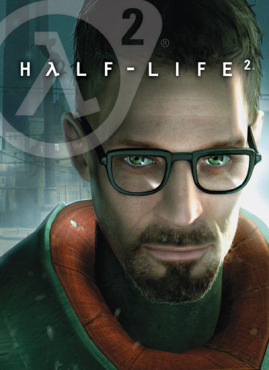


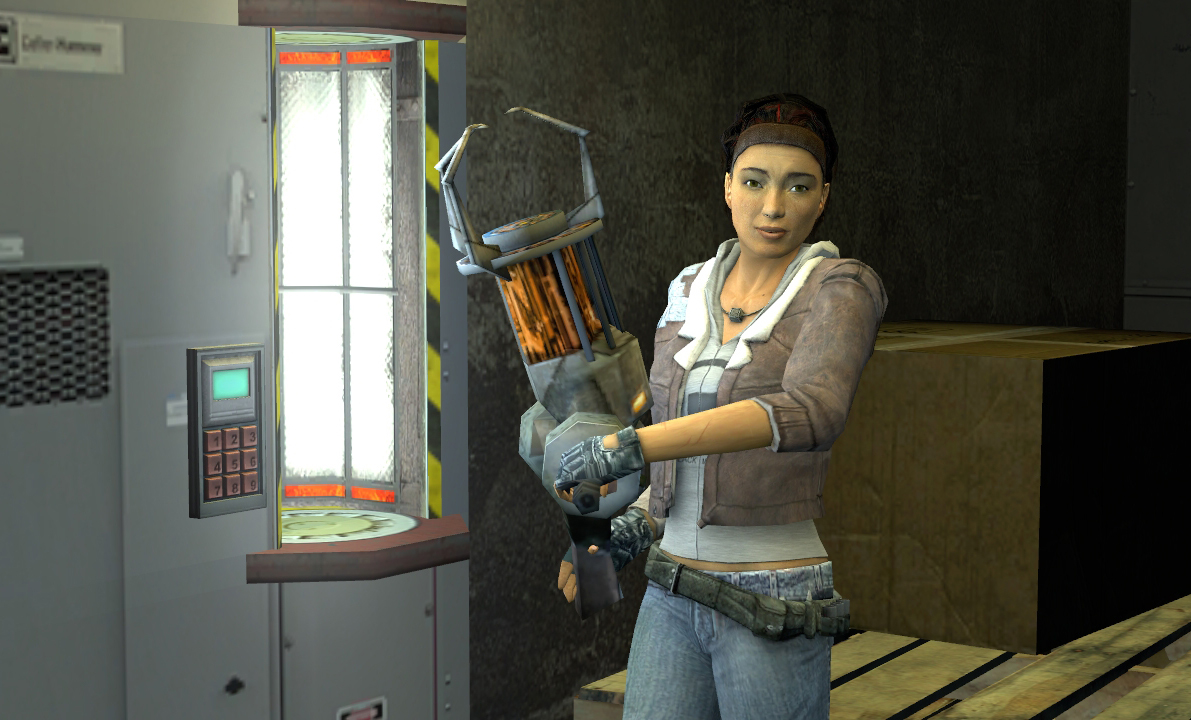
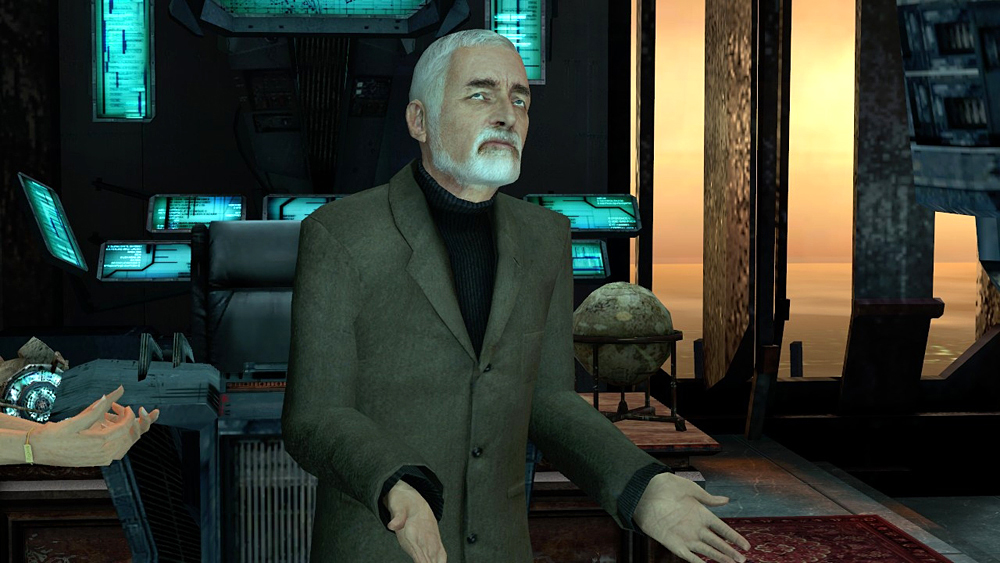







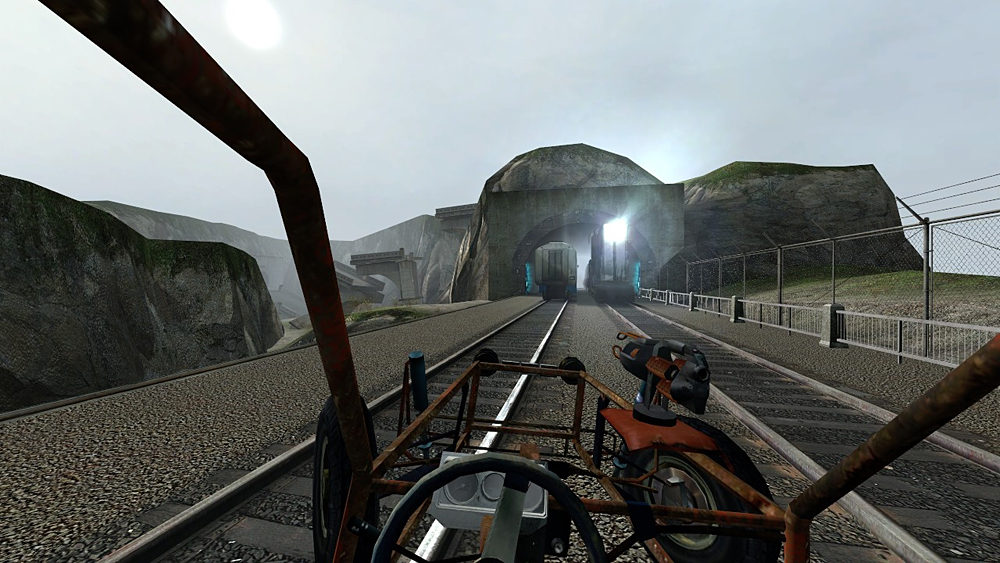
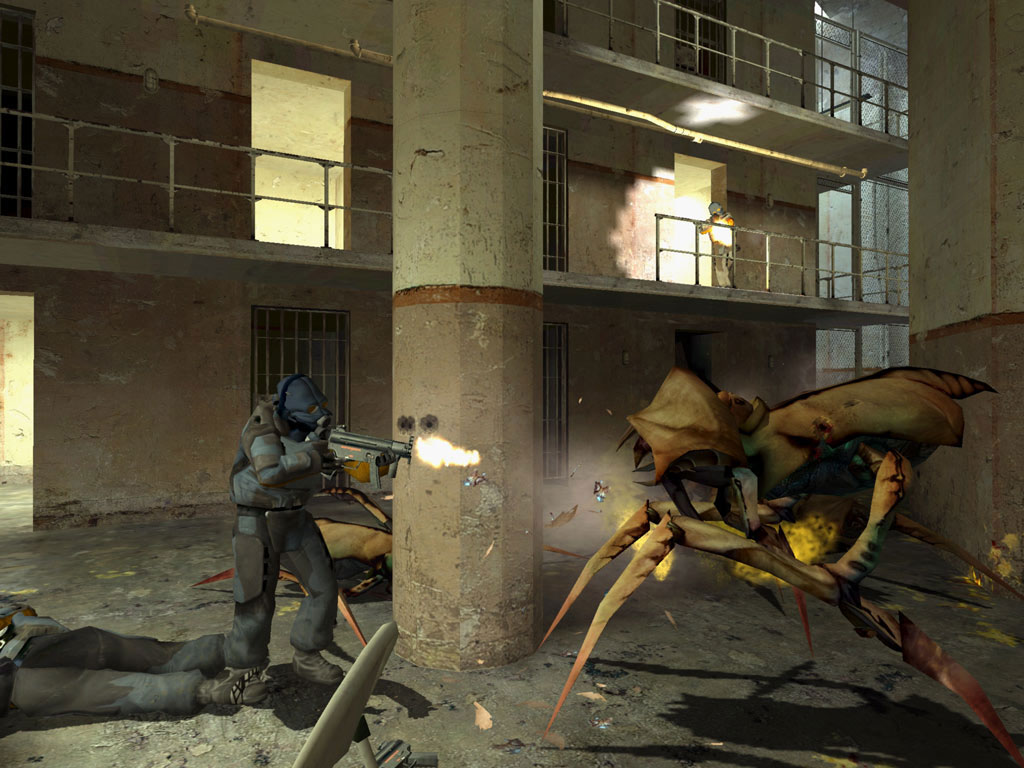


No comments:
Post a Comment